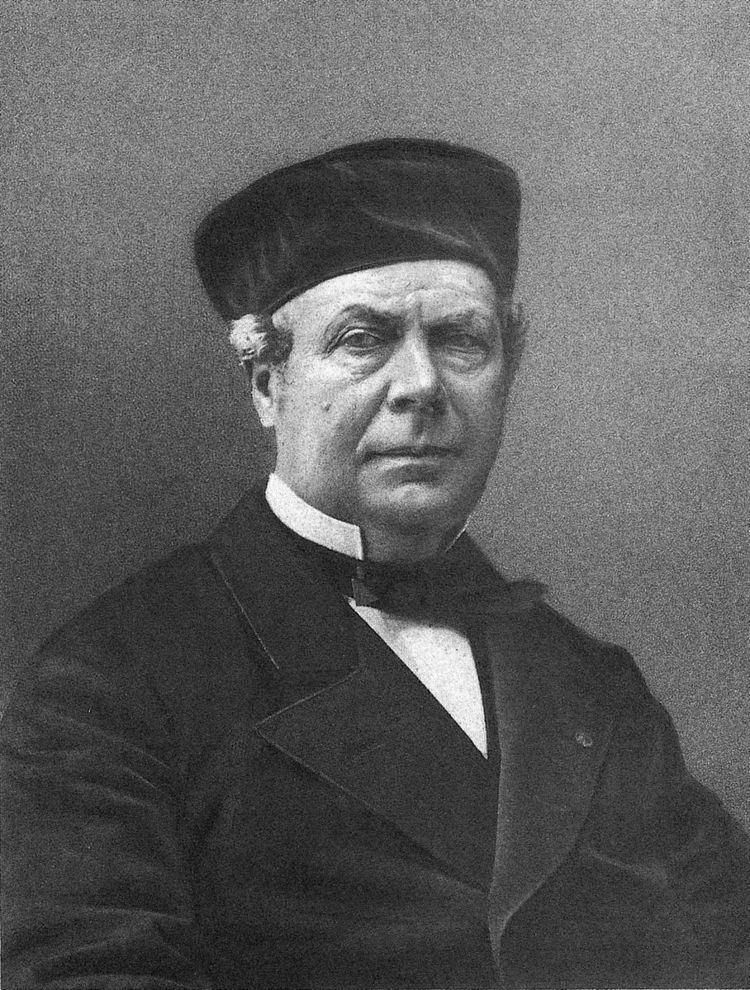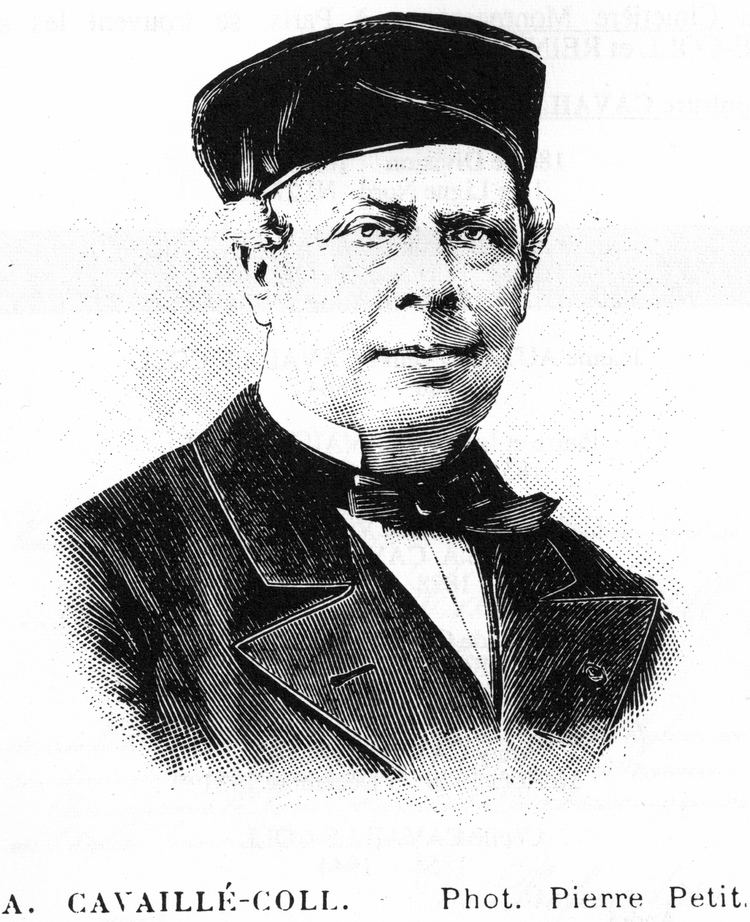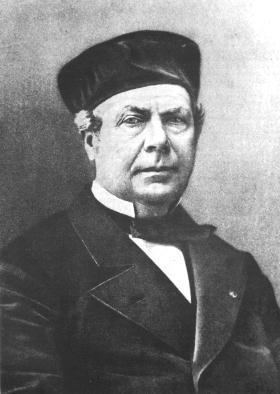Name Aristide Cavaille-Coll | ||
 | ||
Died 13 October 1899(1899-10-13) (aged 88)Paris, France | ||
La madeleine paris organ improvisation by peter ewers organ from aristide cavaille coll 1846
Aristide Cavaillé-Coll ([aʁistid kavaje kɔl]; 4 February 1811 – 13 October 1899), was a French organ builder. He has the reputation of being the most distinguished organ builder of the 19th century. He pioneered innovations in the art and science of organ building that permeated throughout the profession and influenced the course of organ building and organ composing through the early 20th century. The organ reform movement sought to return organ building to a more Baroque style; but since the 1980s, Cavaillé-Coll's designs have come back into fashion. After Cavaillé-Coll's death, Charles Mutin maintained the business into the 20th century. Cavaillé-Coll was the author of many scientific journal articles and books on the organ in which he published the results of his researches and experiments. He was the inventor of several organ sounds/ranks/stops such as the flûte harmonique.
Contents
- La madeleine paris organ improvisation by peter ewers organ from aristide cavaille coll 1846
- Bourdon 32 nach Aristide Cavaille Coll von Albert Baumhoer
- Life
- Organ building innovations
- Legacy
- Film
- Existing Cavaill Coll organs
- In France
- In Spain
- In the United Kingdom
- In the Netherlands
- In Belgium
- In Portugal
- In Italy
- In Denmark
- In Russia
- In Venezuela
- In Brazil
- In Mexico
- In Chile
- In Argentina
- In Japan
- Asteroid
- References

Bourdon 32' nach Aristide Cavaille Coll von Albert Baumhoer
Life

Born in Montpellier, France, to Dominique, one in a line of organ builders, he showed early talent in mechanical innovation. He exhibited an outstanding fine art when designing and building his famous instruments. There is a before and an after Cavaillé-Coll. His organs are "symphonic organs": that is, they can reproduce the sounds of other instruments and combine them as well. His largest and greatest organ is in Saint-Sulpice, Paris. Featuring 100 stops and five manuals, this magnificent instrument, which unlike many others remains practically unaltered, is a candidate to become a UNESCO World Heritage Site.

Cavaillé-Coll was also well known for his financial problems. The art of his handcrafted instruments, unparalleled at that time, was not enough to ensure his firm's survival. It was inherited in 1898, shortly before his death in Paris, by Charles Mutin. He continued in the organ business, but by World War II the firm had almost disappeared.
Organ building innovations
Cavaillé-Coll is responsible for many innovations that revolutionized organ building, performance and composition. Instead of the Positif, Cavaillé-Coll placed the Grand-Chœur manual as the lowest manual, and included couplers that allowed the entire tonal resources of the organ to be played from the Grand-Chœur. He refined the English swell box by devising a spring-loaded (later balanced) pedal with which the organist could operate the swell shutters, thus increasing the organ's potential for expression. He adjusted pipemaking and voicing techniques, thus creating a whole family of stops imitating orchestral instruments such as the bassoon, the oboe and the english horn. He popularized the harmonic flute stop, which, together with the montre, the gambe and the bourdon, formed the fonds (foundations) of the organ. He introduced divided windchests which were controlled by ventils. These allowed the use of higher wind pressures and for each manual's anches (reed stops) to be added or subtracted as a group by means of a pedal. Higher wind pressures allowed the organ to include many more stops of 8' (unison) pitch in every division, so complete fonds as well as reed choruses could be placed in every division, designed to be superimposed on top of one another. Sometimes he placed the treble part of the compass on a higher pressure than the bass, to emphasize melody lines and counteract the natural tendency of small pipes (especially reeds) to be softer.

For a mechanical tracker action and its couplers to operate under these higher wind pressures, pneumatic assistance provided by the Barker lever was required, which Cavaillé-Coll included in his larger instruments. This device made it possible to couple all the manuals together and play on the full organ without expending a great deal of effort. He also invented an ingenious pneumatic combination action system for his five-manual organ at Église Saint-Sulpice, Paris. All these innovations allowed a seamless crescendo from pianissimo all the way to fortissimo, something never before possible on the organ. His organ at the Basilique Ste-Clotilde, Paris (proclaimed a basilica by Pope Leo XIII in 1897) was one of the first to be built with several of these new features. Consequently, it influenced César Franck, who was the titular organist there. The organ works of Franck have inspired generations of organist-composers who came after him.
Legacy
Marcel Dupré stated once that "composing for an orchestra is quite different from composing for an organ... with exception of Master Cavaillé-Coll's symphonic organs: in that case one has to observe an extreme attention when writing for such kind of majestic instruments." Almost a century beforehand, César Franck had ecstatically said of the rather modest Cavaillé-Coll instrument at l'Eglise St.-Jean-St.-François in Paris with words that summed up everything the builder was trying to do: "Mon nouvel orgue ? C'est un orchestre !" ("My new organ? It's an orchestra!"). Franck later became organist of a much larger Cavaillé-Coll organ at Ste. Clotilde in Paris. In 1878 Franck was featured recitalist on the four-manual Cavaillé-Coll organ at the Palais du Trocadéro in the Trocadéro area of Paris; this organ was subsequently rebuilt by V. & F. Gonzales in 1939 and reinstalled in the Palais de Chaillot which replaced the Palais de Trocadéro to Palais, then rebuilt in 1975 by Danion-Gonzales and relocated to the Auditorium Maurice Ravel in Lyon. Franck's Trois Pièces were premiered on the Trocadéro organ.
Film
A documentary film titled The Genius of Cavaillé-Coll was released in 2012 by Fugue State Films to mark both the 200th anniversary of Cavaillé-Coll's birth in 2011 and the 150th anniversary of his organ at St Sulpice. It won the DVD Documentary Award of the BBC Music Awards 2014.
Existing Cavaillé-Coll organs
For a complete list of all organs by Cavaillé-Coll, see: List of Organs by Aristide Cavaillé-CollIn France
The organ of St. Ouen de Rouen is believed to be completely unmodified in any way (save for normal maintenance) since its completion, and is frequently recorded as an example of "pure" Cavaillé-Coll sound.
In Spain
In the United Kingdom
In the Netherlands
In Belgium
In Portugal
In Italy
In addition, Cavaillé-Coll designed a large but never-built pipe organ for Saint Peter's Basilica, where a 1/10 scale model is preserved.
In Denmark
In Russia
In Venezuela
In Brazil
In Mexico
In Chile
In Argentina
In Japan
Asteroid
Cavaillé-Coll's name was given to an asteroid: 5184 Cavaillé-Coll.
